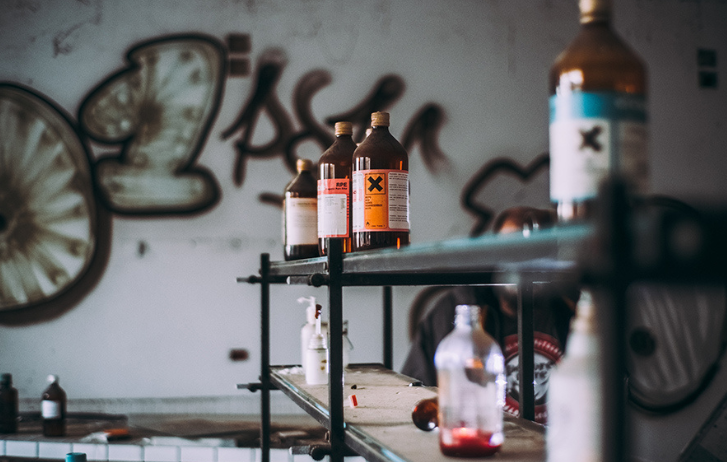
What You Need To Know To Ship Dangerous Goods
By FedEx | First published: July 2, 2020 Updated: October 19, 2023
You may be handling and transporting dangerous goods without even knowing it. Check out our guide to make sure you and your business stay safe.
Did you know that perfume, oil paint, art kits, lithium batteries and even laptop computers are all considered dangerous goods during transport?
Dangerous goods and hazardous substances can be right in front of you – and you might not know it. Battery-powered devices, aerosols, and oxygen cylinders are often overlooked. Under some circumstances, these everyday items can harm people, property, and the environment.
Shipping dangerous goods can be a complex process, but with the right information at your fingertips, you can ensure deliveries are safe and hassle-free. Whether you’re shipping hazardous materials for personal or commercial reasons, it’s crucial to understand regulations as well as the right precautions to take.
Dangerous goods are divided into nine classes, including explosives, gases, flammable liquids, toxic substances, and infectious substances. Each category has its own set of regulations and packaging requirements, so it’s essential to identify the correct classification for your shipment.
By identifying your dangerous goods and packaging every shipment correctly, you’re not only protecting your shipment, but yourself. We've put together a list of things to consider before handling and shipping dangerous goods:
1. Identify your shipment.
You’ll need to refer to the International Air Transport Association (IATA) and International Civil Aviation Organization (ICAO) for the correct identification, classification (including UN or ID number), Proper Shipping Name, hazard class and, if applicable, subsidiary risk and Packing Group.
2. Package your shipments correctly.
Some dangerous goods have very specific packaging, labeling, and marking requirements – and you’ll need to meet them. Plan ahead and pack your shipments correctly with a Shipper’s Declaration for Dangerous Goods form. Not sure what that is? Download it here. If you’re shipping products with lithium batteries, visit our Lithium Battery Portal for more information.
3. Avoid penalties for incorrect packaging or labels.
Make sure you aren’t caught off-guard. Shippers who don’t prepare packages according to IATA and ICAO regulations can experience delays, risk being fined by regulatory authorities and even face criminal prosecution and imprisonment. Stay up to date with the Regulatory of the final destination or contact your local FedEx Customer Service Center for help.
4. Work with a logistics expert.
Engaging the services of a freight or logistics company experienced in handling dangerous goods can take some of the pressure off. At FedEx, we have decades of expertise in how to navigate complex regulations and ensure compliance with all necessary procedures. We can also provide guidance on packaging, labeling, and documentation, saving you time and potential headaches along the way.
We also deliver region and market-specific services across Asia Pacific and beyond for customers who need to ship dangerous goods. We've launched a one-stop solutions for dangerous goods in Malaysia as well as the Philippines. We also have similar services in Japan, Korea, Singapore, Taiwan, and Hong Kong.
Our convenient one-stop services allow our customers to rely on FedEx to handle the entire shipment process of dangerous goods from start to finish. We can step in from initial classification assistance to prepping clearance documents, arranging the specialized packaging, liaising with airports and pick up and delivery. Most SMEs have no specialized knowledge in this area. Outsourcing can save time and skip the need for a third-party agent or middleman.
Remember: FedEx is a world leader in dangerous goods. We ship them safely every day. Our team of specialists is ready to answer any of your questions to help you navigate the process smoothly.
Just contact your local FedEx Express Customer Service and ask to speak with a dangerous goods specialist. Putting safety and compliance first not only protects you and your business, but helps keep communities safe.
SHARE THIS STORY
- How To Ship A Giant Panda
- How To Make Freight Shipments Work For Your Small Business
- The Rise Of Intra-Asia Trade: Opportunities In The China-Southeast Asia Corridor
- Southeast Asia: The Next Manufacturing Powerhouse?
- 8 Most Unusual Shipments In The History Of FedEx
- Where Do Old Planes Go When They Retire?
Sign up now and save on your shipping rates!
Sign up now and earn discounts by shipping instantly with FedEx Ship ManagerTM at fedex.com.
Recommended For You

Navigating Customer Demand For Fast, Sustainable Delivery In Australia
Consumers are increasingly focused on sustainability as well as fast delivery. Here are some insights that can help SMEs in Australia.
Read More
How To Get Better Value When Shipping Cross-Border
When choosing international shipping options, SMEs and e-tailers consider cost and speed. Find out which FedEx service is best for your business.
Read More
8 Most Unusual Shipments In The History Of FedEx
From priceless artifacts to live animals, FedEx leverages its global network to ship rare and unusual items.
Read More
